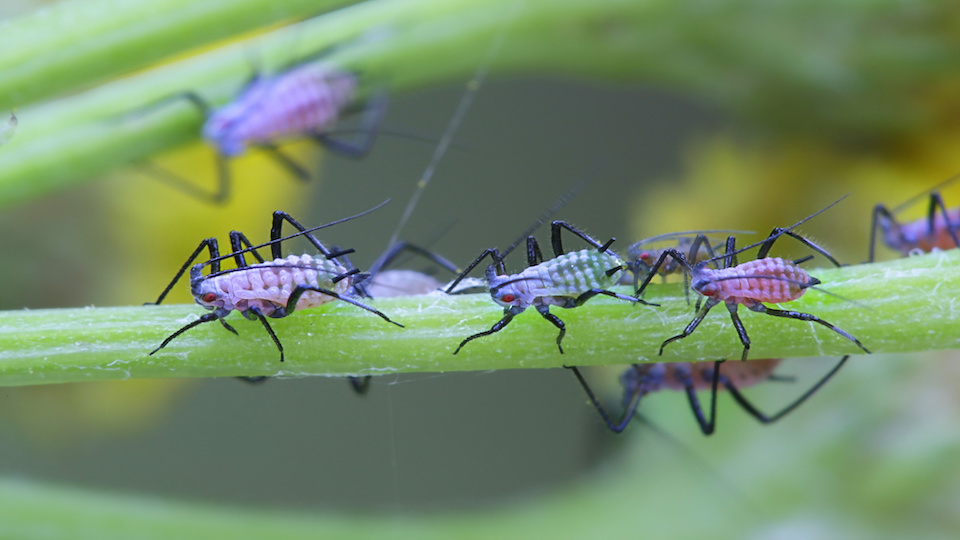When it comes to garden pests, an ounce of prevention is always worth a pound of cure. Healthy plants that have been adequately fed and watered can generally tolerate a few bugs without any trouble.
However, if an excessive number of pests decide to move in, most are relatively easy to control. The first step is to determine what type of pests have invaded your garden.
It’s essential to use an integrated, multi-pronged approach that relies on non-chemical solutions whenever possible. Toxic chemicals aren’t only unhealthy for you and the environment; they also kill friendly insects that keep bad bugs in check.
Read on for information on a few of the most common plant pests, and how you can keep them from getting the upper hand in your garden.
Aphids have short lifespans, but females reproduce rapidly. Small but extremely destructive, the sucking pests are often found in masses on the underside of leaves. They not only suck out the sweet plant juices, but they emit sticky honeydew that attracts ants and often leads to the development of sooty mold. Aphids are easy to control with insecticidal soap or botanical oil, although severe infestations may require several treatments.
Thrips are another type of sap-sucking insect that can damage nearly any kind of plant. The tiny flying insects also leave specks of excrement on the foliage, which often leads to unsightly white patches. These stubborn pests often require a multi-pronged approach, such as insecticidal soap or botanical oil. Blue sticky traps are also useful.
Spider mites are difficult to see with the naked eye, but you can spot the tiny arthropods by the fine webbing they leave on plants. Damage includes streaking, spotting, and leaf drop. You can get rid of spider mites with insecticidal soap or botanical oil. Be sure to water plants properly; mites are attracted to dry, dusty conditions.
Cutworms are harmful pests that can destroy entire rows of plants by chewing through stems at ground level. To control cutworms, pick the pests off plants in the evening. Remove and destroy plant debris where cutworms hide. Create scratchy barriers with coffee grounds, eggshells, diatomaceous earth or other gritty substances. Birds love cutworms; put out a feeder and invite birds to visit your garden.
Whiteflies are another type of common, sap-sucking pest. Small numbers of whiteflies are relatively harmless, but a severe infestation may cause leaves to turn yellow and drop from the plant. Like aphids, whiteflies emit a sweet substance that attracts ants and sooty mold. Sticky traps and insecticidal soap will keep the pests in check.
Scale is an odd little pest that sucks the sweet nectar from plants, and the damage can be devastating. Two types of scale are common in gardens: soft scale, with a waxy, protective cover; and hard scale, generally found on branches, twigs, and other woody tissue. Controlling scale isn’t easy, but botanical oil will effectively kill the pests by suffocation. Insecticidal soap spray is also useful against scale if used regularly. Prune and carefully dispose of infected plant parts to eliminate spread.
Leaf miners are actually the larvae of various pests such as beetles, sawflies, and moths. The pests are relatively harmless, but they may leave blotches and crooked trails where they feed on the leaves. If you think treatment is necessary, yellow sticky traps will catch adults as they lay eggs. Insecticidal soap may also help. Floating row covers will prevent the pests from laying eggs on leaves.
-Mary Helen Dyer




